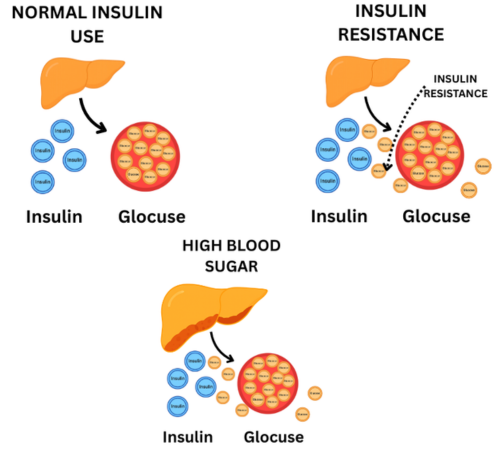About diabetes
Understanding Type 2 Diabetes
What is Type 2 Diabetes?
In type 2 diabetes, the body develops insulin resistance — a condition where it doesn’t use insulin properly, the hormone that regulates blood sugar. In the beginning, the pancreas makes extra insulin to keep up in check. But over time, especially with over-carbohydrate intake, the pancreas can no longer produce enough insulin, causing blood sugar to be high.

Type 2 diabetes is no longer limited to people over the age of forty. Due to major lifestyle changes, it is now affecting younger adults as well. Your healthcare professional may prescribe medications — including insulin — depending on your individual needs. However, well-established scientific research shows that Dietary Changes, Consistent Exercise, and Weight Loss are three proven pillars that can not only help manage the disease but also, in many cases, reverse its course.
Common Symptoms
Recognizing early signs of Type 2 diabetes can help prevent serious complications:
- Blurry vision
- Excessive thirst
- Constant hunger
- frequent urination
- Fatigue or low energy
- Slow wound healing
- Tingling, pain, or numbness in the hands/feet
If you or a loved one is experiencing these symptoms, early diagnosis can help speed recovery and prevent complications of diabetes.
Still Confused Between Type 1 and Type 2?
Type 1 and type 2 diabetes share many symptoms, but their causes are very different. Type 1 is an autoimmune condition where the body destroys insulin-producing cells, while type 2 develops when the body resists insulin and can’t use it well. Because treatments differ, it’s important to know which type is present. Sometimes antibody or C-peptide tests are needed to make the diagnosis clear.
👉 Read more: Type 1 vs Type 2 Diabetes
FAQs

Q2: What is the main cause of type 2 diabetes?
Insulin resistance is the key cause. Over time, the pancreas can’t make enough insulin, leading to high blood sugar.
People who are overweight, inactive, or have a family history are at higher risk.
Increased thirst, frequent urination, tiredness, and blurred vision are common signs.
Yes. Staying active, eating healthy, and maintaining a healthy weight can lower your risk.

